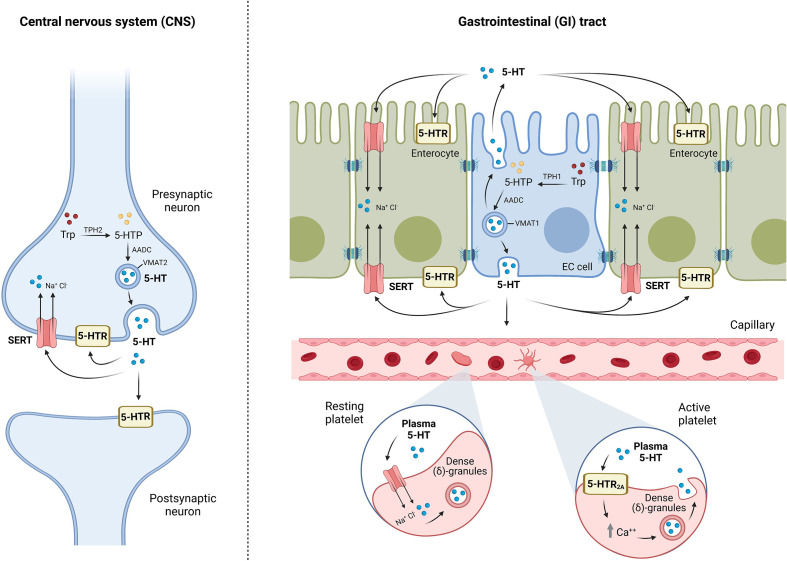Figure 1.
Schematic representation of brain and intestinal serotonergic systems: “ON/OFF” and signaling mechanisms. “ON” mechanism refers to the synthesis of 5-HT by enterochromaffin cells (EC) in the gut and serotonergic neurons both in the gut and in the central nervous system (CNS). Tryptophan (Trp) is catalyzed by the enzyme tryptophan hydroxylase (TPH), TPH1 in EC cells, and TPH2 in neurons, to synthesize 5-hydroxytryptophan (5-HTP), which is converted to 5-HT by aromatic amino acid decarboxylase (AADC). 5-HT is stored into vesicles through the vesicular monoamine transporter VMAT (VMAT1 in EC cells, and VMAT2 in neurons) and finally released into the extracellular space. 5-HT can bind to different serotonin receptors (5-HTR) or uptake into neurons, enterocytes, or platelets by the serotonin transporter (SERT), ending 5-HT effects (“OFF” mechanism). 5-HT is mostly stored in the dense (δ)-granules of platelets; however, the binding of plasma 5-HT to the platelet surface receptor 5-HT2A initiates the mobilization of intracellular calcium stores for platelet activation, which promotes platelet degranulation, resulting in 5-HT release. Serotonin exerts its effects by signaling mechanisms through the 5-HT receptors located in postsynaptic and presynaptic neurons at CNS and intestinal serotonergic neurons, and in different cell types of gastrointestinal (GI) tract, but also in other systems such as the cardiovascular or immune system.

